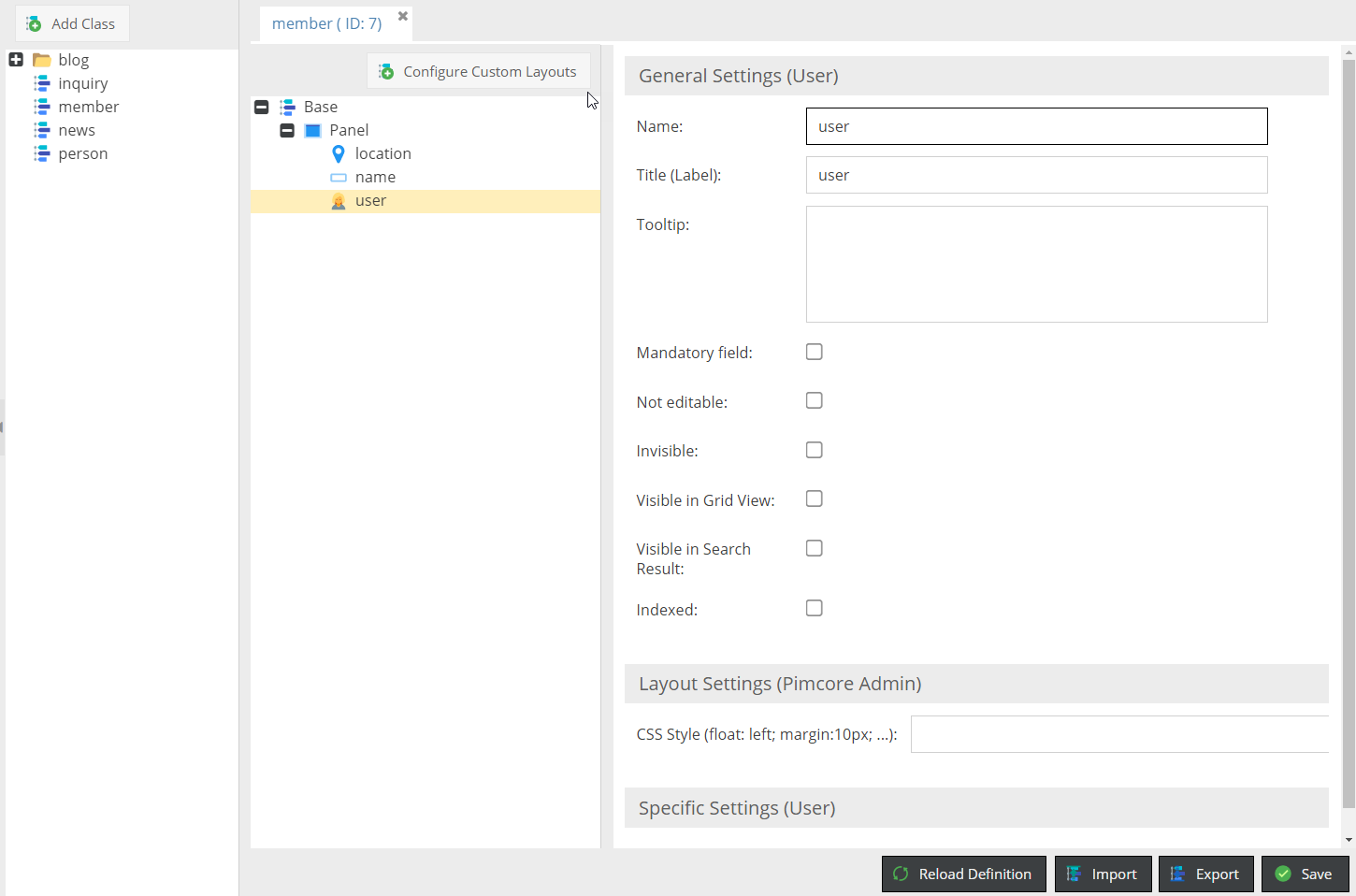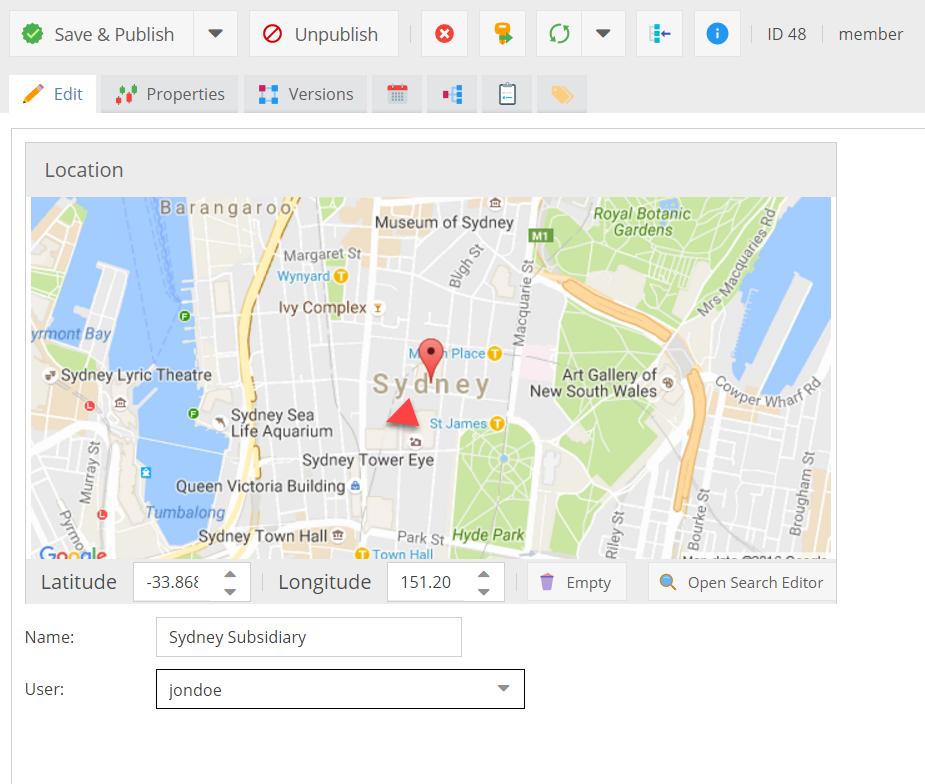Extending the Pimcore User
Pimcore does not allow to extend the user directly. Instead it allows to create a relation between a user and one or more Pimcore objects. This can be used to add information to a user or to associate one or more objects directly with a system user.
This article presents an example where the member object is associated with a Pimcore user.
The screenshots show how this can be achieved through the Pimcore backend UI. In the bottom
there is also an example of how the user and member objects can be created and associated
with each other programmatically.
Regardless of the creation method of users and objects, in the first step the member class has to be defined in Settings > Object > Classes:

In this example, the class member has the three properties location, name and user.
The class can have an arbitrary number of properties. What is important in this context is,
that it has a property of the type User. Speaking in code this would be a
\Pimcore\Model\DataObject\ClassDefinition\Data\User.
When creating the first object instance of the member class, you can see the input widget for the user property. It is a combo box where a user can be selected from all available Pimcore users.

In this example the user "jondoe" was selected.
In the Settings > Users panel this relation is portrayed in the third tab of each
user which is called This user is referenced in the following objects:

Objects and users are not necessarily always created through user input in the admin interface. Sometimes these objects are created programmatically in the context of importers. The following code snippet shows how to first create the user and then the member object with the relation to the previously created user:
use Pimcore\Model\User;
use Pimcore\Model\DataObject;
...
//create a new user for Sydney
$user = User::create([
"parentId" => (int) $userGroup->getId(),
"username" => "sydney",
"password" => "password1234",
"hasCredentials" => true,
"active" => true
]);
...
//create the Sydney member object
$object = new DataObject\Member();
$object->setCreationDate(time());
$object->setUserOwner($currentUser->getId());
$object->setUserModification($currentUser->getId());
$object->setPublished(true);
$object->setName("Sydney Subsidiary");
$object->setKey("member1234");
//select the user belonging to this object
$object->setUser($user->getId());
$object->setParentId($parentFolderId);
$object->save();
...
Aside from creating these objects, one might need to find out what objects are associated with a certain user. There is a convenient method available to find all objects associated with a specific user:
$objects = \Pimcore\Model\DataObject\Service::getObjectsReferencingUser($userId);